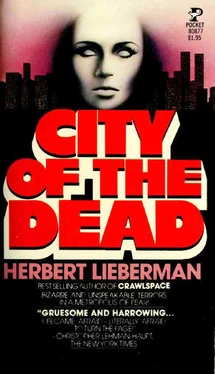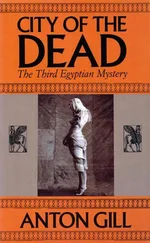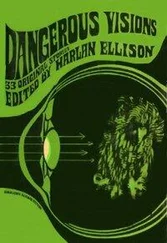Then suddenly, even as his mind is conjuring the page, there it is—crumpled, wadded, buried somewhere near the bottom. In the next moment he’s holding it in trembling hands, sweeping off debris, smoothing out the creases of the page on ihe surface of the long trestle table. And there, finally, is the very picture he imagined—the smiling girl; the short gentleman with the tiara. Above it, a headline, partially torn and obliterated, reads:
CARNIVAL QUEEN CROWNED
Then an inverted pyramidal subhead: “Gloria Melendez to Represent Clinton at City-Wide Beauty Finals.”
His eyes gloss quickly over the story, all the details suddenly flooding back to him. Then he realizes what it was that had registered in his mind, several days back, but which, at the time, he didn’t fully comprehend. It’s not the story, which is innocuous and common enough to be completely forgotten moments after it’s read. No. Rather it’s the page upon which the story appears. Not a page of one of the big city dailies that are crammed into that valise. Instead, it is the front page of a small publication called the Clintonian , one of those little community sheets that come out three or four times a year, distributed as a special slip edition with one of the larger tabloids.
Somewhat smaller than a regular tabloid-size page, this one is crammed with news about the Clinton community, that sprawling ghettolike area running north and south through the Forties and Fifties, and east and west from Eighth Avenue all the way to the Hudson River. Once known as Hell’s Kitchen, it is now an area in rapid flux. Crumbling old brownstones next to urban-renewal projects. Factories and warehouses side by side with small merchants—Greek butchers, Italian bakers, Puerto Rican bodegas and costermongers. Black dudes and their hookers. And the lower-middle classes there fleeing burgeoning crime.
And that’s what had stuck in Konig’s head. Not the pretty Puerto Rican girl with the cheap tiara crown. No. It was this little neighborhood newspaper, crammed full of homey little items about a famous local community. Mr. Karolides, the butcher, announces the engagement of his daughter, Rosanna, to Nicholas Magos, a local florist. Mr. Joseph Pappalia slashes all prices by half in his small haberdashery. A picture of Miss Lottie Munoz, proprietor of a local beauty parlor, waving the hair of Miss Flossie Jewel, cashier at the local cinema, and so forth.
Konig rummages about in the valise for other pages of the publication, but this is the only one he finds. The front page. It bears the date, Sunday, March 31, 1974. In the upper right-hand corner is the serial number 3118. On the opposite side of the page is the photograph of Gloria Melendez.
In the next moment, Konig is back on the phone, dialing Flynn at the phone booth on 8th Street.
“Where the hell ya been?” Flynn growls before Konig can get a word out. “There’s three people waitin’ on line outside this goddamn booth making faces at me.”
“Make a face back,” snarls Konig. “Now listen to me.”
“You said five minutes,” Flynn carps. “Instead you keep me waitin’—”
“Listen to me, goddamnit. Where’d you get that paper?”
“What paper?”
“The paper you packed the heads in.”
“That’s the paper they were wrapped in.”
“The paper you found them in?”
“Yeah, for Chrissake, didn’t I just say so?”
“Okay, that’s all I wanted to know,” Konig shouts. “I’m sending you a page of newspaper—”
“What the hell for?”
“Never mind what the hell for. I’m telling you what for.”
“Don’t you start your goddamn shoutin’—”
“Shouting?” Konig’s voice booms into the speaker. “I’ll come down there myself and stuff this paper down your throat. Now you listen to me, goddamnit—”
“Now just a min—”
“Don’t interrupt me. Just shut your mouth and do exactly as I tell you.”
Long after he’d hung up, Konig continues to sit at his desk while the shadows of the dying afternoon creep all about him From downstairs in the street below the sound of children playing stickball and roller-skating wafts upward through his open windows. But Konig hears nothing. He is watching the phone again and waiting.
Now that the Novocaine has worn off, a dull pain has begun to gnaw at his jaw where the dentist drilled that morning. It is a pain, he well knows, that will mount steadily during the next few hours.
From out of the wide assortment of phials, tablets, and spansules in his lower drawer, he takes a Demerol, and another amyl nitrite to relieve the growing sense of constriction in his chest.
A short time later the mail boy walks in, dumps a banded packet of new mail on his desk, and walks out. Konig never stirs. In fact, he scarcely notices the boy’s coming or going. The mail simply sits there along with the rest of his business, untouched, unattended.
An hour later he is still sitting there. Carver has already poked her head in to say good night, just as she has done religiously each work night for the past twelve years. She warns him against staying too late and then goes herself.
Still he waits and watches his phone, all alone in the encroaching dusk of an April night in the city.
Shortly after seven o’clock he pushes his chair away from the desk and on stiff legs lurches to his feet. He has decided to go. Where, he doesn’t know. Certainly not home Not back there to all that. Incredibly, he’s hungry. It occurs to him that he hasn’t had a thing in his stomach but coffee and Scotch for the past three days.
Putting on his jacket he catches a glimpse of the packet of mail still on his desk bound with a thick rubber band. “Time for that tomorrow,” he mutters and starts out. But something there calls him back Some letter of great urgency His University mail Budgetary matters. A decision on his request for Federal grant monies. International correspondence Something—
With a sigh of resignation he removes the rubber band and flips disconsolately through a stack of envelopes and finds nothing of any great moment But in all that package of stem official-looking correspondence, each with its own glossy and portentous imprint, there is one small, strangely anonymous-looking envelope. It is of a pale-lilac color, suggesting female stationery. The name “Paul Konig” is printed on the face of it in a large, wavering, childlike hand, and it is postmarked Grand Central Station. There is no return address. Inside, he can feel something flat, heavy, metallic.
He studies it for a while, hefting it in his hand, turning it about, uncertain why he feels that sharp visceral spasm. His legs wobble beneath him and in the next moment he has to sit. For a long time he holds the little lilac envelope in his hand, eying it warily, reluctant to open it, like a man trying to evade some long-expected bad news. Then slowly he tears the seal.
The first thing that comes out of the envelope is a large brass key with a flat numbered head that reads “2384. Grand Central Station. Property of Baggage Clerk.”
Inside, on more lilac stationery, is a note put together from words cut out of newspapers and magazines, then glued to the paper. It reads “Friday. 12:15. $300,000. denominations no higher than $20. deposit locker number 2384. after depositing, leave at once. NO TRICKS PLEASE.”
It is not signed, but on the bottom is a small thumbprint pressed in what is unmistakably blood. Beneath that, the word “lolly,” as if to suggest it is her blood.
For a while he sits there holding the brass baggage key, cold and clammy to the touch, the crooked, wobbly little letters of the message swimming before his eyes, the thumbprint of his daughter like the bloody spoor of a small hurt animal.
Читать дальше












